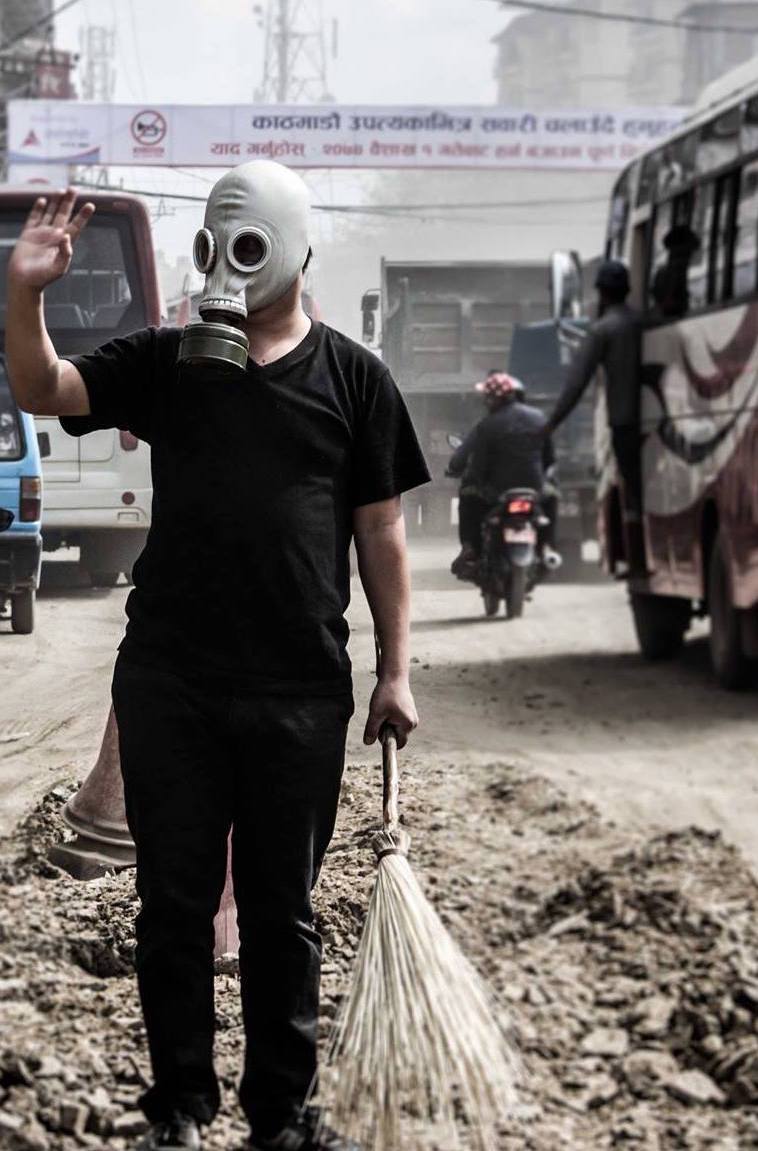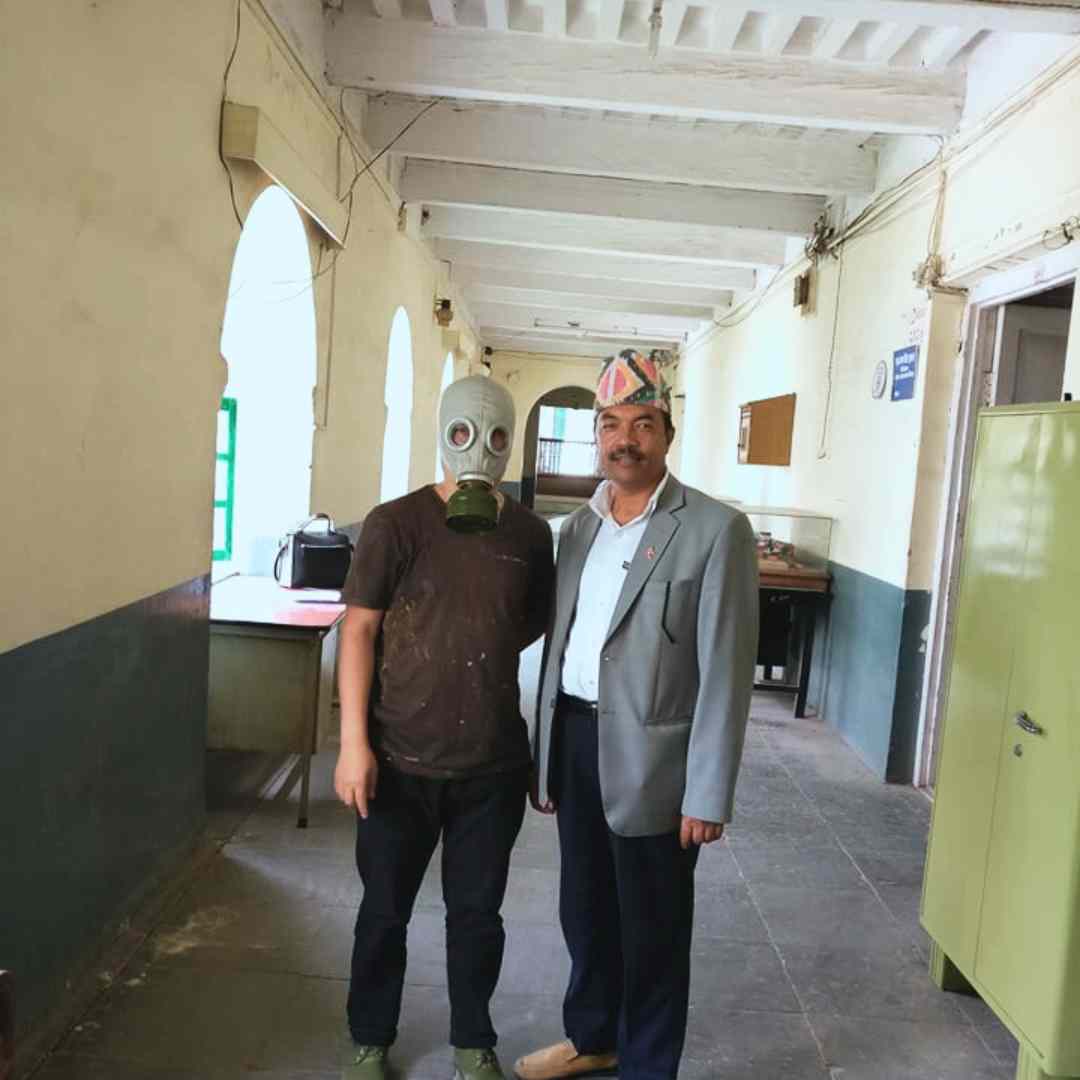Thereafter, he frequented Kathmandu Metropolitan offices and concerned departments wearing a gas mask. He met with a former mayor of Kathmandu to seek Accountability. However, what ensued were tedious administrative procedures and paperwork, without any tangible action. Fourteen months went by, without any breakthrough in sight.
The Year 2017, Social practice artist, Milan Rai was introspecting on the progressively deteriorating urban environment.


With this contemplation, He positioned himself in the polluted streets of Kathmandu, wearing a gas mask. He chose visual narratives to question:


When his proposals were overlooked, he turned to Lalitpur Metropolitan, where he faced similar bureaucratic tangles for several months.Through his consistent appearance, (gas mask) he made it hard for the city officials to ignore his presence.
If it was an outright protest, they wouldn't listen. His unconventional approach and perseverance caught the attention of the mayor leading to an invitation at his office.

Milan organized a meeting among peers and formalized Vriksha as a non-profit entity in 2019. This step was essential for legal compliances and cross sectoral partnerships.
As the Mayor noticed our dedication to re-imagining public spaces, he wanted our participation in the city-level park development projects he had announced. The alternative approaches and possibilities presented by this initiative might have remained distant had we not encouraged city officials to rethink public spaces.

Our journey so far has tested us with challenges, and instilled within us persistence, resilience, and experience over time. Every intervention, and the lessons learned is a chapter in our story.
As we strive to unlock the possibilities of public spaces, the prevailing system continue to erode the essence of open spaces in the valley.We are trying to make sense of this situations and surpass the obsolete practices outdated methods, rigid mind-sets with news ways of thinking. We are re-imagining and decolonizing the convectional idea of park designs.




A photographic account of seeking accountability within the Metropolitan offices and concerned departments of Kathmandu, Nepal, spanning from 2017 to 2019.



ready to be a part of the probable future ?